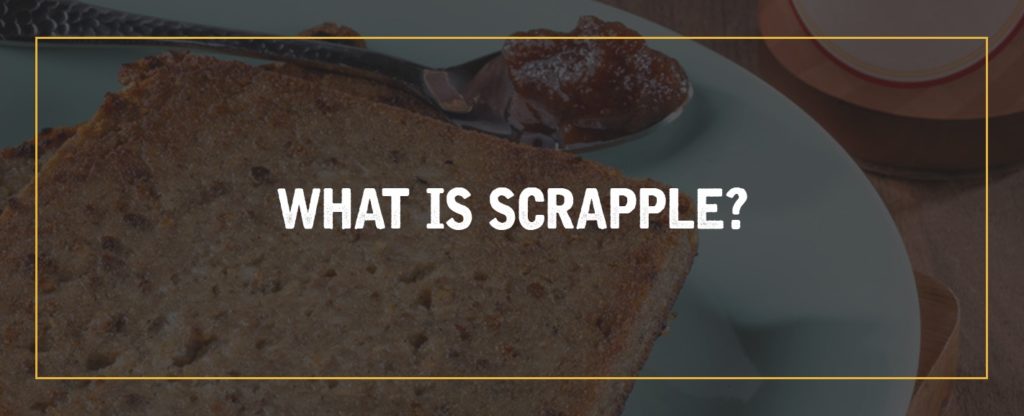
There’s nothing like the sizzling sounds and mouthwatering smell of breakfast meat frying up in a pan. Combine that with a steaming cup of freshly brewed coffee, and your morning is off to a great start. When it comes to breakfast meats, you’re probably used to the classics: sausage and bacon. But have you ever tried, or even heard of, scrapple?
Also nicknamed “poor man’s bacon,” scrapple is a breakfast and brunch favorite in Lancaster County. This dish has both Dutch and German origins, and it’s most popular in areas of Pennsylvania with Dutch and German roots. Essentially a type of meat pudding, scrapple is usually made from finely minced ground pork meat and offal, spices, and coarse flour such as cornmeal or buckwheat.
What Is Scrapple Made Of?
Looking at a slice of scrapple, you may wonder what’s in it. Traditional scrapple ingredients include the following.
- Pork: One of the main ingredients is finely minced or ground pork, which can come from various cuts of pork.
- Offal: Offal is another pork ingredient. It is a mixture of organ meat and other trimmings from a butchered hog.
- Flour: A coarse flour such as cornmeal, buckwheat or both is another main ingredient in scrapple.
- Stock: Pork stock is what helps bring together the various ingredients into one slurry.
- Spices: Spices such as salt, pepper and various herbs season the scrapple.
Some scrapple can also include onions and other flavor additions, but the above ingredients are the essentials in delicious Pennsylvania scrapple.
How Is Scrapple Made?
Farmers originally made scrapple to avoid wasting the trimmings when they butchered a hog. The addition of flour or meal made the meat go further and added to the unique texture. Today, Pennsylvania Dutch companies like S. Clyde Weaver use the same recipe those immigrant farmers did, and people still love the results.
So, how do we make scrapple? We start with cuts of pork and offal. The meat simmers in water until it’s cooked through and tender. Then, we separate the meat from the stock and process it until we achieve the perfect consistency. Every scrapple chef puts their unique touch on the recipe with different spice combos, but salt and pepper are staples in nearly every recipe.
We combine the minced meat with some stock and mix in buckwheat and cornmeal, the traditional combination of starches for Pennsylvania scrapple. This mixture forms a slurry or mush that needs to cook for a long time until it thickens.
Pouring the thickened mixture into loaf pans to cool results in the classic loaf shape that characterizes scrapple. At this stage, many people slice scrapple into half-inch slabs and lightly pan-fry it before serving. As we’ll see, though, there are many ways you can prepare and enjoy scrapple. Get yours now!
The History of Pennsylvania Scrapple
Scrapple is a Pennsylvania Dutch creation that reflects the heritage of those early colonial settlers from Germany. The first Pennsylvania Dutch immigrated to Pennsylvania during the 17th and 18th centuries. Whether their country of origin was Germany or Switzerland, they spoke German as a shared language. The term Pennsylvania Dutch is a bit of a misnomer, since these settlers were not Dutch. The term comes from the German word for their native tongue: “Deutsch.”
This group of immigrants formed a community in Pennsylvania and developed unique cultural practices, which combined influences from their European homeland with their new home. Part of that heritage is the Pennsylvania Dutch culinary tradition, which is responsible for all sorts of delicious foods, but perhaps no dish is more quintessentially Pennsylvanian than scrapple.
Scrapple is similar to European black puddings, so it’s easy to see the influence of the culinary customs German and Swiss immigrants brought with them. One significant difference is that scrapple does not include blood in the recipe. Also, the addition of cornmeal makes scrapple more distinctly American. Still, scrapple is one of the few dishes we enjoy in the United States, albeit primarily in one region, that is similar to meat puddings overseas.
There is some debate over where the term “scrapple” comes from, but it likely came from the German word panhaskröppe. This word stems from two words: “panhaas” or “panaas,” meaning “pan rabbit,” and “skröppel,” meaning “a slice of.” Panhaskröppe, then, translates to “a slice of pan rabbit.” Over time, this German word evolved into the simplified term “scrapple.”
People have long recognized Pennsylvania as the home of scrapple. An issue of The Montreal Gazette from 1909 noted, “Scrapple was invented up in the Pennsylvania Dutch belt, and it is here that it can be found at its best.” That’s still true today, over a century later, but you can find scrapple in other mid-Atlantic states like Maryland, Delaware, New Jersey and parts of New York and Virginia. Still, most people consider Pennsylvania scrapple to be the most authentic version of this unique breakfast food.
It’s easy to see why scrapple was a popular dish with mid-Atlantic settlers. These folks found ways to get the most out of every harvest and animal they butchered. Scrapple was an excellent way to use some of the trimmings that did not make it into sausage or other dishes, and the addition of starches took that rich pork flavor and turned it into a large, hearty loaf that could feed a family at breakfast.
That same 1909 article from The Montreal Gazette sang the praises of scrapple’s nutritional value, saying, “Scrapple-fed children in the country are healthier and make progress at school. And scrapple-fed wives make homes bright.” That’s quite a claim, but the organ meat in scrapple does indeed offer some rich nutritional value.
Today, some food companies mass-produce scrapple and sell it in grocery stores in the mid-Atlantic region. Specialty companies like S. Clyde Weaver make scrapple in smaller batches using authentic time-honored recipes and methods. Our pork scrapple sticks to the traditional ingredients that have made this food a longtime favorite in Pennsylvania, but you can find some variations on the market that use other types of meat, like beef or turkey, for instance.
How Is Scrapple Cooked?
Scrapple comes pre-cooked, so you could just slice off a piece and dig in. But to enjoy scrapple the traditional way, you’ll want to give the scrapple a nice sear. Cooking scrapple on the stove gives the outside of each slice that signature crispiness and brings out the flavors so you can enjoy the full scrapple experience.
Typically, home chefs cut scrapple into slices that are anywhere from one-quarter to three-quarters of an inch thick. To fry the scrapple, you can use either butter or oil. Just make sure it sizzles in the pan until it has formed a crust on both sides. You’ll have to flip the slices over midway through cooking. Use a wide spatula and flip gently to keep them from falling apart.
You can also coat scrapple slices in flour before frying, and you can even deep-fry scrapple. On the other end of the spectrum, if you prefer not to fry the scrapple, you can place the slices under a broiler to crisp them up.
How Do You Eat Scrapple?
You’ll also want to top your scrapple with the right condiments or pair it with other breakfast foods to create your perfect flavor combination. Scrapple is a surprisingly versatile food, so many people like to get creative. Let’s look in a little more detail at your options for preparing scrapple.
- On a breakfast sandwich: After lightly frying scrapple slices in a skillet, you can serve them up with other breakfast favorites, like fried eggs and potatoes. Some people like to include their scrapple as part of a breakfast sandwich, wedged between egg and melted cheese or bagel halves.
- With sweet condiments: You can also add a touch of sweetness to the savory scrapple by eating it with apple butter, honey, any kind of jelly or maple syrup. If you’ve ever had maple bacon or sausage, you know how delicious this sweet-salty combination can be for breakfast!
- With savory condiments: Savory condiments are also a popular choice for topping off a delicious slice of scrapple. Some options to try include ketchup, horseradish and mustard. Experiment to see what condiments you enjoy with your scrapple. The possibilities are endless.
- As a dinner entree: While scrapple is traditionally a breakfast food, no rules say you can only eat it for your first meal of the day. You can also serve it as a main dish, as you would meatloaf. Pair it with some vegetable sides, and you have a yummy, comforting dinner.
- As a snack: Because it’s filling and nutritious, scrapple can also be a snack when you need a pick-me-up between meals. Try eating a slice of scrapple along with some cut fruit or applesauce. These flavors tend to go well together, and you’ll have the fuel you need to power through your day until mealtime.
Since scrapple is such an adaptable food, there are plenty of other ways you can enjoy it. Scrapple lovers are always finding new ways to make scrapple a part of their meals. One blogger even recommends putting scrapple in a waffle iron and pouring in waffle batter to create a “scraffle.”
Enjoy scrapple on special occasions like holiday breakfasts, or make it a regular part of your family’s meals. Either way, you can’t go wrong when you serve up delicious slices of scrapple.
Why You Should Try Scrapple
Hopefully, this article has taught you a lot about scrapple, but if you’re still not entirely convinced you should try this unusual breakfast food, here are five solid reasons to consider.
- It’s a regional favorite: In such a large and diverse country, each region has signature foods that bring locals pride and spread to Americans in other places. These include delicacies like Carolina barbecue or Cajun cuisine and specific dishes like Cincinnati chili or Chicago deep-dish pizza. If you enjoy eating your way through America’s diverse landscape, you’ve got to try scrapple. It is a distinctly regional dish, and it will transport your taste buds to Pennsylvania.
- It’s hearty and nutritious: Another reason to try scrapple is that it’s filling enough to help you start the day right. Many Americans today don’t eat much organ meat, but it’s an excellent source of vitamins and minerals. Combining pork with nutrient-rich offal and healthy grains makes for a truly fortifying breakfast.
- It’s a great way to switch up breakfast: Typically, choosing breakfast meat comes down to bacon vs. sausage. Here at S. Clyde Weaver, we’ve been providing families with these delicious breakfast meats for a century. But we also think scrapple is a great way to add some more variety to your breakfasts.
- There are so many ways to enjoy it: Scrapple’s adaptability allows you to serve it in a variety of ways. Even if you try it and are not crazy about it, you may love it prepared another way. If it’s love at first bite, you can still enjoy this product in different ways by trying it with different toppings and sides.
- It’s delicious: Finally, you should try scrapple because it’s tasty. It has lasted through the centuries for a reason. People love the unique texture and taste of this pork product. For many Pennsylvanians, scrapple is a taste of home, and it’s a delightful taste.
For these reasons and more, you should take the leap and try scrapple. See what you’ve been missing out on!
S. Clyde Weaver’s Pennsylvania Dutch Scrapple
If you’ve never tried authentic scrapple or just want to taste a new variety, you’ve come to the right place! At S. Clyde Weaver, we make a delectable Lancaster country scrapple that you can try in-house or have shipped right to your door. Our country scrapple borrows Dutch and German flavors to create the perfect holiday breakfast or meal accompaniment.
Our Lancaster pork scrapple is made with premium pork meat, cornmeal, buckwheat flour and our special spice blend. It’s available in one and 6.5-pound loaves. There is nothing quite like authentic Lancaster County pork scrapple — a recipe unique to our region and loved by customers all over the country!
S. Clyde Weaver is a family-owned and operated producer of fine smoked meats, cheeses and other Lancaster County specialties. We’ve been serving our community for 100 years and counting, and it’s our mission to provide you with artisan products that are second to none.
Browse our scrapple in-store or online today!
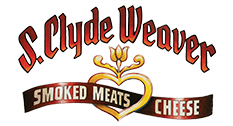
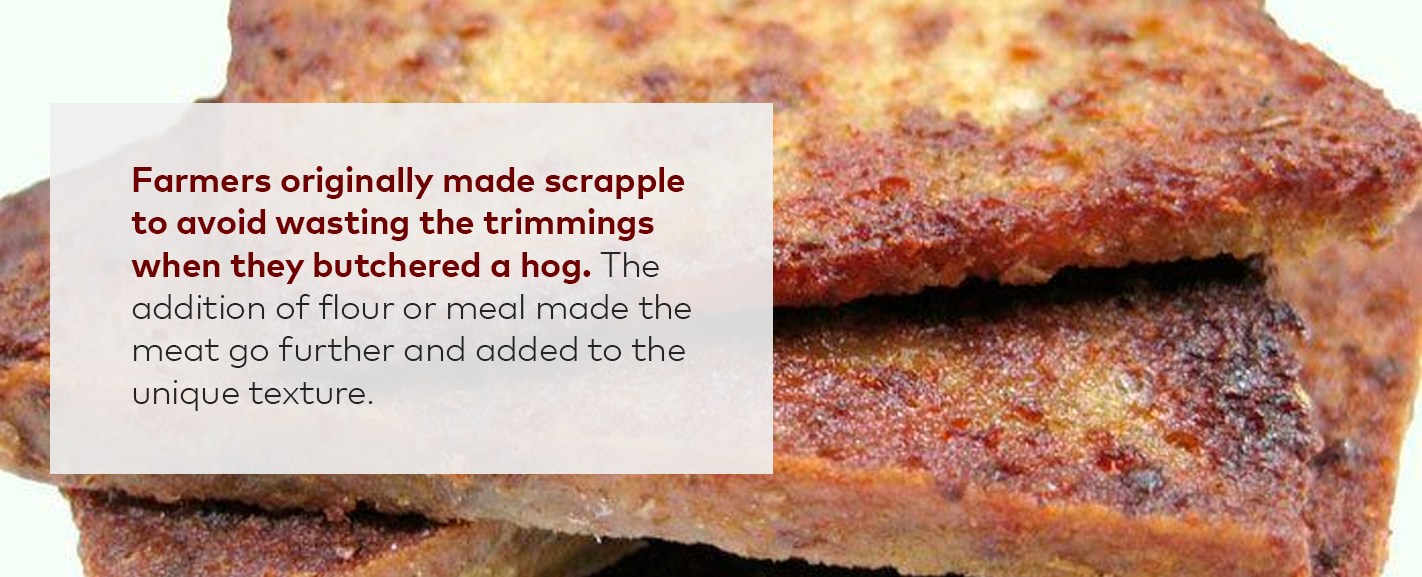
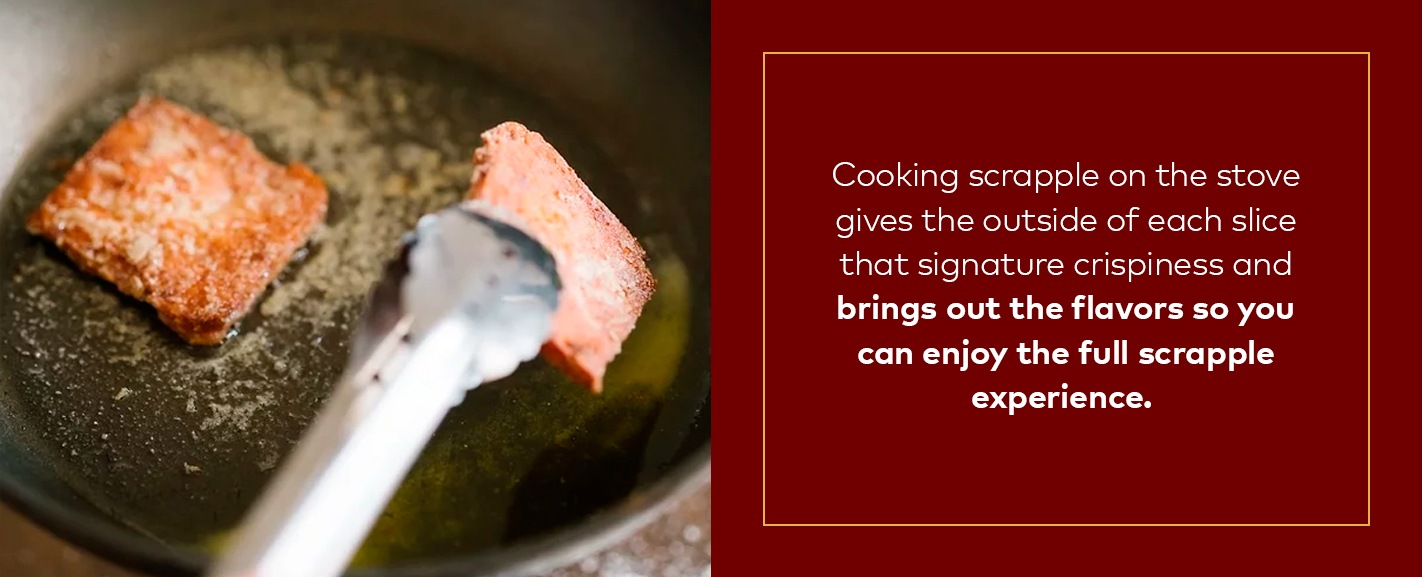

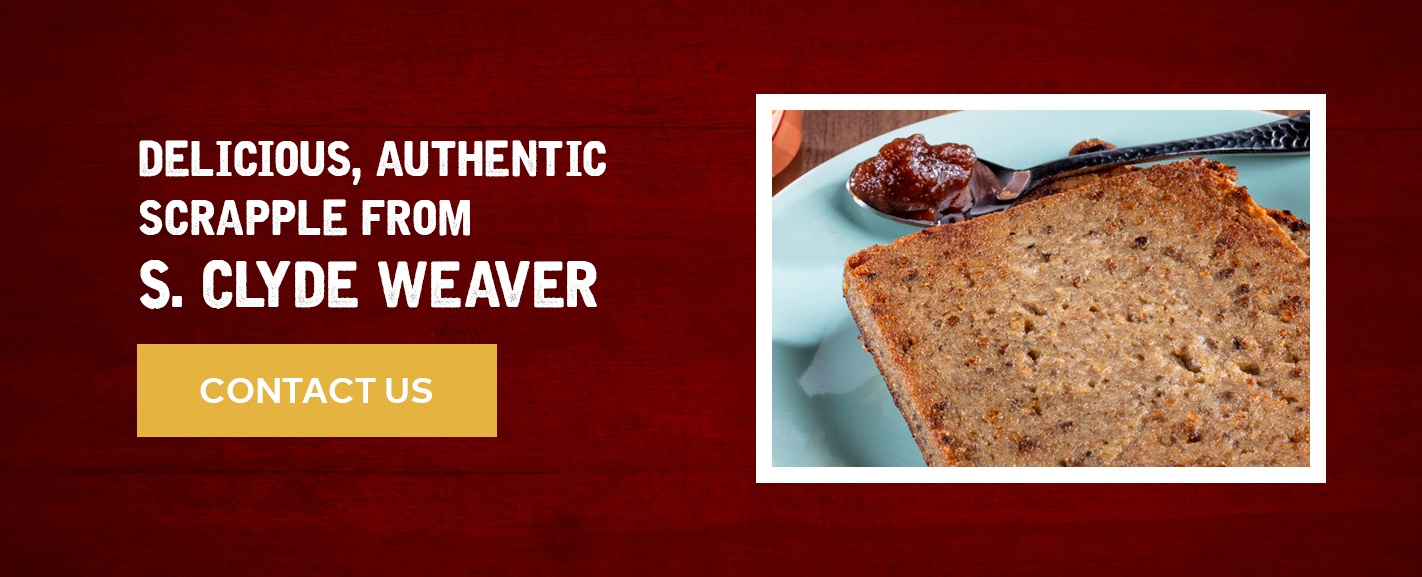
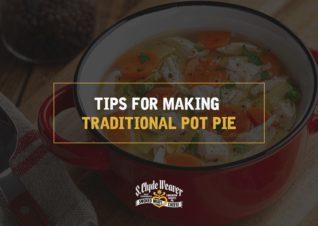
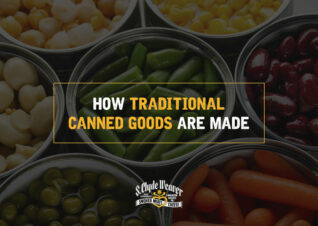
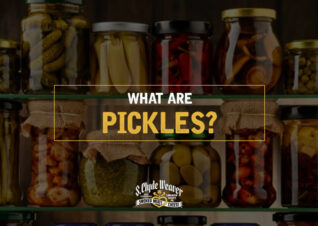







I love, love love scrapple. Im 78 years old, and Ive eaten scrapple most of my life. We normally eat it for breakfast with eggs. But if any is left over it makes a great sandwich. Philly cheese steaks, Philly soft pretzels, Philly hoagies (sub, zep, poboy, hero) and scrapple for me
I am of German descent and we loved having Scrapple at butchering time. Made ours with cornmeal. Don’t hunk I’d like it with buckwheat. Wish someplace in Iowa sold this. I’d drive many miles to get some good Scrapple.
Our family always had scrapple on the weekends. We like it fried up nice and crispy and then we put ketchup on it! I guess it falls into the sweet and savory category similar to apple butter, but it’s the only way I eat scrapple now. Love the stuff!
Fried to a truly crispy crust then buttered and smothered in maple syrup or LogCabin syrup then placed on a buttered slice of fresh Italian or French bread….M-m-m-m So good!!
My familiy is Pennsylvania Dutch and I grew up helping to butcher and making scrapple. I don’t remember liking in much when I was young, but grew very interested in it again when started to eat a Paleo Diet 10 years ago. I reallized that scrapple is a perfect paleo food and steeped with nutrients. If made during butchering, it includes bone broth since you have to cook the meat off the bones. Bone broth has marrow, calcium, and collogen. The organ meats are very healthy and nutrient dense. I started eating scrapple often and even tried making venison scrapple. I talked to one butcher who adds an entire pig skin into his recipe – more collogen.
Since my family hails from The Netherlands, we grew up eating Balkenbrij made much like Scrapple. I often use pork sausage with corn meal and can include extra trimmings from pork. Some folks make the loaf with buckwheat flour bur I regard it as being too strong and obscures the meat flavor and spices as well. White sugar, or brown is a good sweetener. I have added apple chunks and onions. Not known as a creative dish, I enjoy trying different additions and slightly changing the flavor profile.
Scrapple is some good eating but I can’t find it in any stores where I live. I live in Tennessee